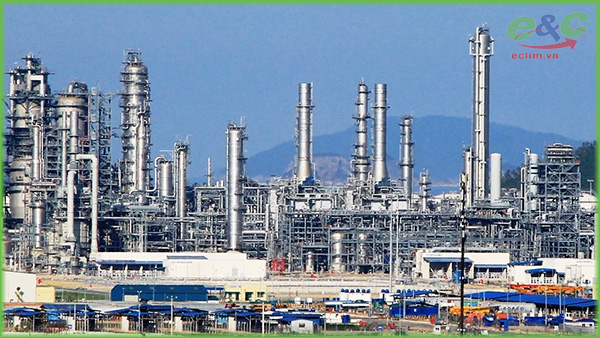This year, prices were held back by a stronger USD, economic slowdown in many countries and output from non-OPEC countries rising past 100 million barrels per day, despite record high demand. In addition, the conflict in the Middle East has not caused oil prices to return to last year's peak.
According to a survey conducted by Reuters with more than thirty analysts, Brent oil prices could average $84.40 per barrel by 2024. International Energy Agency and Organization of Petroleum Exporting Countries (OPEC) predicts that oil demand next year will increase from 1.1 to 2.25 million barrels per day.
However, energy consulting firms Rystad Energy, JP Morgan, Kpler and Wood Mackenzie predict that supply will increase by 1.2 to 1.9 million barrels per day in 2024, mainly thanks to non-OPEC countries. . "We think next year, every quarter will be oversupplied," Macquarie strategist Vikas Dwivedi said.

Crude oil is withdrawn from an oil tanker at a port in Zhejiang (China). Photo: Reuters
According to analysts, investors should pay attention to the following issues in the crude oil market in 2024.
1. Compliance with production quotas of OPEC+ countries
During the November meeting, the Organization of the Petroleum Exporting Countries and its allies (OPEC+) agreed to reduce production by 2.2 million barrels per day in the first quarter of 2024. ANZ said the world oil market could be short of nearly 500,000 barrels per day if these countries comply.
"The first quarter will be key, as we can gauge OPEC's level of compliance," said Wood Mackenzie's Ann-Louise Hittle. Additionally, if Wood Mackenzie's demand forecast is correct, she said these countries will not need to extend voluntary cuts beyond the first quarter.
According to Energy Aspects, Saudi Arabia's supply will still decrease in the second quarter, but will gradually increase thereafter. However, they also do not rule out the possibility that this country will reduce supply again when necessary.

2. Unknowns include Russia, Iran and Venezuela.
After the US eased sanctions on Venezuela in October, this country's oil returned to the global market. It will last six months.
JP Morgan analysts said if President Nicolas Maduro's government gets the election deal right with the opposition party, the US could extend it for another six months. They assess that “US sanctions and Venezuelan crude oil production will probably determine the long-term fate of these two countries in the 2024 presidential election.”
JP Morgan predicts that lifting sanctions on state-owned oil company PDVSA will help Venezuela's oil production increase from 760,000 barrels in 2023 to 880,000 barrels next year and 963,000 barrels in 2025.

Oil traders say Iraqi and Canadian oil will also be affected by the recovery of Venezuelan heavy oil supplies to the United States and India. As U.S. refineries load more Venezuelan oil, the amount of U.S. crude exported to Asia is likely to increase.
Analysts say Russia and Iran will still supply global oil despite sanctions. This will help increase value ahead of the US Presidential election. Iran's current goal is to produce 3.6 million barrels of oil per day by the first quarter of 2024, up from the current 3.4 million barrels.
3. Newly developed oil refineries
Analysts say that after Russia's military campaign in Ukraine, the supply of petroleum products, especially diesel, is limited. On the other hand, supply is expected to gradually increase next year. Next year, the markets of China, India, Mexico, the Middle East and Nigeria will receive more than one million barrels of oil products daily.

The emergence of new refineries, such as China's Yulong Petrochemical, India's Panipat and Koyali, Nigeria's Dangote and Mexico's Dos Bocas, has contributed to this.
4. Countries that do not participate in OPEC
By 2024, the group of non-OPEC oil producers, led by Brazil, Guyana and the United States, is expected to increase production. Under OPEC+ policy, the supply of light sweet crude will increase, while medium-heavy sour crude, also known as medium heavy, remains limited.
According to DWivedi, next year, this could help reduce price differences between crude oils globally. This means the price of light sweet and medium heavy crude is only about two to four dollars per barrel. The current price of light oil and heavy oil is still only 4 USD per barrel.
The majority of refineries in the US, India and China are built to refine heavy oil. Therefore, when plants return to operation after the second quarter maintenance, this oil supply may decrease.
According to Alan Gelder, the US and Asia can compete in importing heavy oil. The US and India can contact Venezuela to buy more heavy oil. Russia and Iran will continue to supply China and India.


